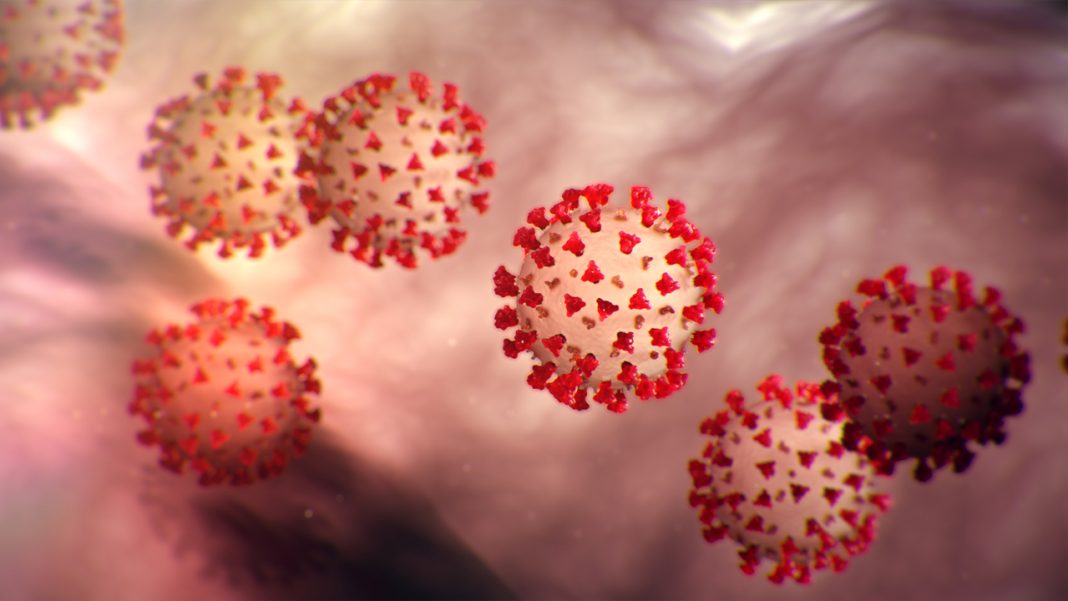The list of compounds that could make an effective COVID-19 treatment grows longer each day. The latest to join the ranks, EIDD-2801, shows notable promise in becoming a weapon in the fight against SARS-CoV-2 and has infused new hope into the search for a possible therapeutic for COVID-19.
A description of the efficacy of EIDD-2801 was published in a bioRxiv preprint late last week titled, “An orally bioavailable broad-spectrum antiviral inhibits SARS-CoV-2 and multiple endemic, epidemic and bat coronavirus.” The researchers reported that both prophylactic (before infection) and therapeutic (after infection) administration of EIDD-2801—in mice infected with the viruses SARS-CoV or MERS-CoV—improved pulmonary function, and reduced virus titer and body weight loss.
The compound at the center of the work, EIDD-2801, comes from the lab of coronavirus veteran Ralph Baric, PhD, professor in the department of microbiology and immunology at the University of North Carolina (UNC) at Chapel Hill. A world expert that has studied RNA viruses for 35 years, Baric’s team also performed much of the early work on remdesivir—Gilead’s drug that is currently being tested in multiple human clinical trials and is leading the pack of SARS-CoV-2 treatment hopefuls.
The UNC group started working on remdesivir five or six years ago and were the first to show that the compound works on every coronavirus, including SARS-CoV-2. Timothy Sheahan, PhD, an assistant professor at UNC and co-first author on the bioRxiv paper along with Amy Sims, PhD, associate professor at UNC, compares remdesivir to a “broad-spectrum antibiotic,” targeting an entire class of viruses.
Now, the team shows that a new compound, the ribonucleoside analog β-D-N4-hydroxycytidine has “broad spectrum antiviral activity against SARS-CoV 2, MERS-CoV, SARS-CoV, and related zoonotic group 2b or 2c Bat-CoVs.” In addition, the compound showed increased potency against a coronavirus bearing resistance mutations to another nucleoside analog inhibitor.
EIDD-2801, the orally bioavailable NHC-prodrug, improved pulmonary function, and reduced virus titer and body weight loss in infected mice. The authors noted that “decreased MERS-CoV yields in vitro and in vivo were associated with increased transition mutation frequency in viral but not host cell RNA, supporting a mechanism of lethal mutagenesis.”
The compound, a nucleoside analogue, inhibits viral replication, acting as a mimic of naturally occurring nucleosides. It was first found to be effective against murine hepatitis virus (MHV) and MERS-CoV in November of 2019, work that was published in a Journal of Virology article titled, “Small-Molecule Antiviral β-D- N 4-Hydroxycytidine Inhibits a Proofreading-Intact Coronavirus With a High Genetic Barrier to Resistance.”
With an exceptional sense of forecasting, the group wrote in the November paper that the emergence of coronaviruses into human populations from animal reservoirs “has demonstrated their epidemic capability, pandemic potential, and ability to cause severe disease.”
Indeed, Baric and his colleagues are people the world could have been listening to more closely. Not even five years ago, their Nature Medicine paper described the current outbreak with eerie accuracy. The paper, “A SARS-like cluster of circulating bat coronaviruses shows potential for human emergence,” described how the researchers examined the disease potential of a SARS-like virus, “which is currently circulating in Chinese horseshoe bat populations.” A second paper, published in PNAS in 2016, titled, “SARS-like WIV1-CoV poised for human emergence,” described efforts to evaluate emergence potential. Focusing on “SARS-like virus sequences isolated from Chinese horseshoe bats,” the results indicate “a significant threat posed by WIV1-CoV.”
Predictions aside, the data on EIDD-2801 suggest that the compound’s potency against multiple coronaviruses, therapeutic efficacy, and oral bioavailability in vivo highlight its potential utility as an effective antiviral against SARS-CoV-2 and other future zoonotic coronaviruses.
With the help of Ridgeback Biotherapeutics, a closely-held biotechnology company, and Drug Innovations at Emory (DRIVE), a not-for-profit biotechnology company wholly owned by Emory University, EIDD-2801 may make its way from bench to bedside. The purpose of the collaboration, according to a press release, is to “rapidly advance DRIVE’s EIDD-2801, a promising oral COVID-19 treatment, into human testing.”



